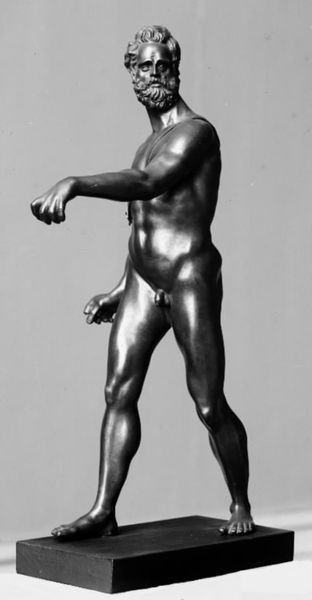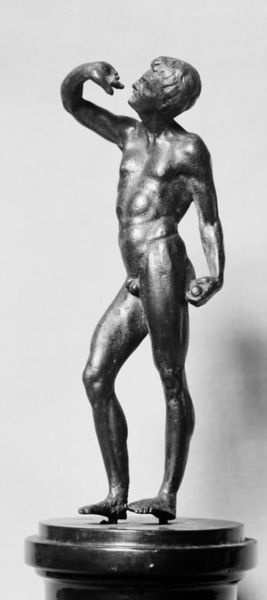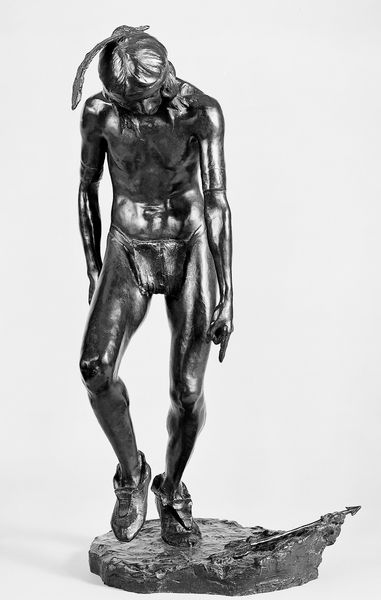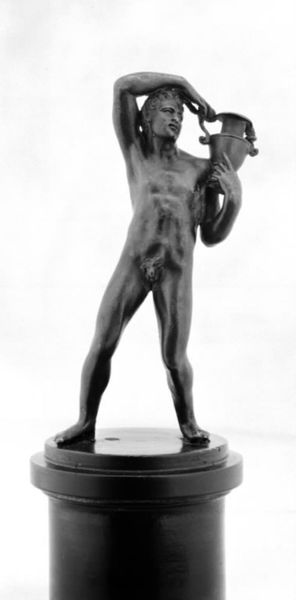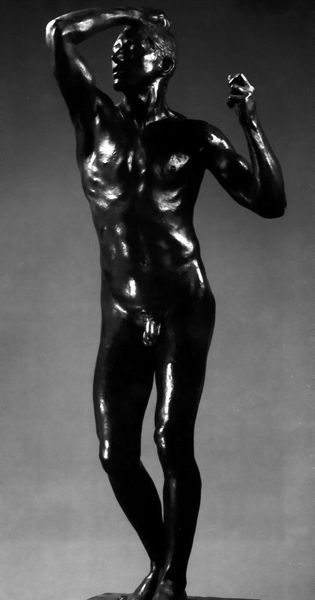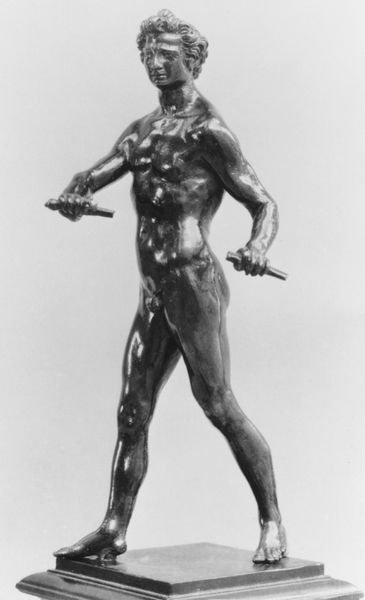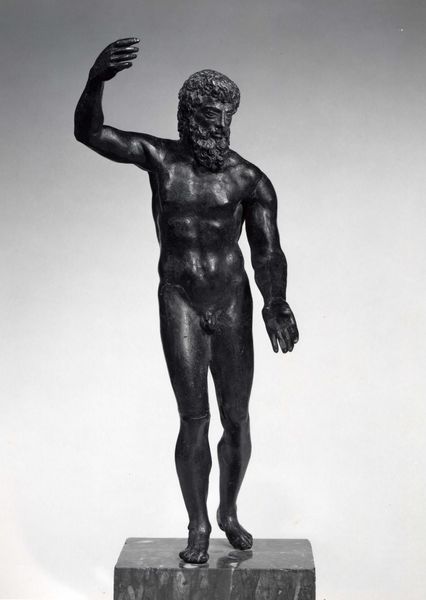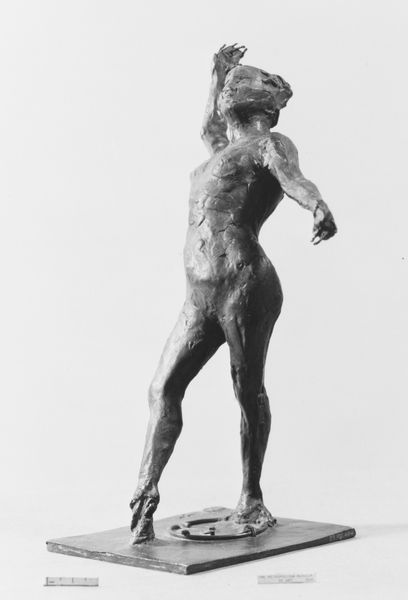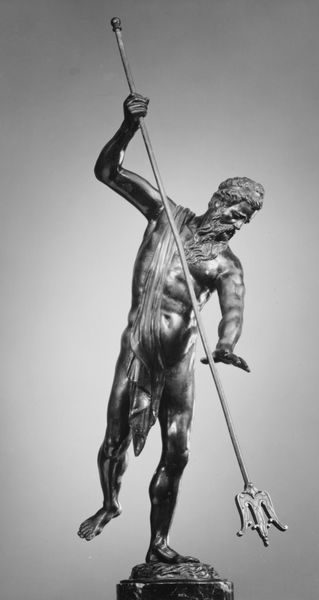
bronze, sculpture
#
bronze
#
mannerism
#
figuration
#
sculpture
#
nude
Dimensions: 37.5 cm (height) x 15.5 cm (width) x 19.4 cm (depth) (Netto)
Giambologna sculpted this bronze figure of Mars, the Roman god of war, sometime in the late 16th century. Look closely, and you can see the result of the lost-wax casting process. The bronze is smooth and highly polished, a surface achieved through meticulous work. The sheen accentuates the figure's muscularity, and the dynamism of his pose. The process begins with a detailed wax model, which is then encased in clay and fired. The wax melts away, leaving a void for the molten bronze. Once cooled, the clay is broken away to reveal the finished sculpture. The artist's expertise is evident in the manipulation of the bronze itself. He imbued the metal with a lifelike quality. Mars's expression is fierce. The sculpture isn't just an artwork, but a testament to the skill, the labor, and the tradition of bronze casting, a process with origins in antiquity. In the Renaissance, that tradition was revived and refined, becoming a vehicle for artistic expression and cultural prestige. By attending to the material and the making, we can more fully appreciate the cultural significance of this impressive bronze.
Comments
No comments
Be the first to comment and join the conversation on the ultimate creative platform.
